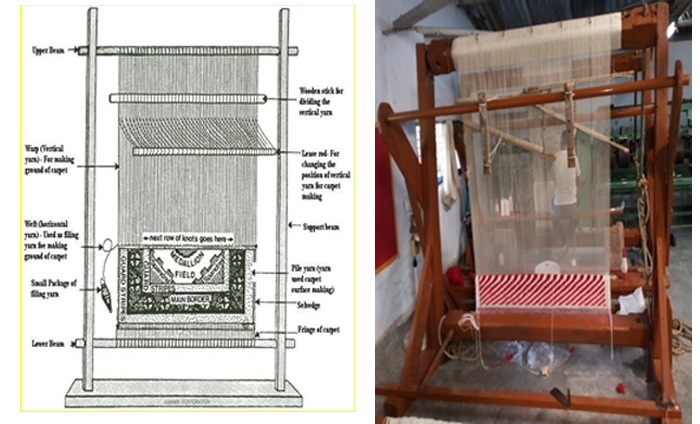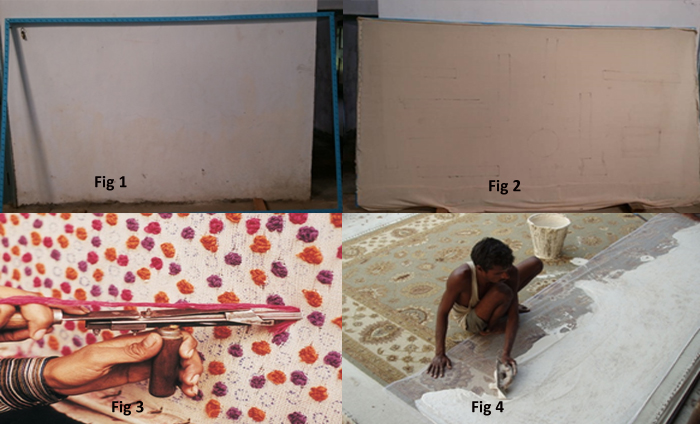Email : wra@wraindia.com
Contact : 022 2586 8109 / 022 2586 8398
- Language :
Carpet Training cum Production Center ( A Collaborative setup of MAVIM & WRA )

Wool Research Association
Wool Research Association was established in 1963, the only national institute in the field of Wool Technology, is located in a green belt about 35 kms from Bombay (Mumbai). WRA is a centre of business activity of the country. It is well connected by two Highways. The concept of Research & Development in the field of wool technology was initiated by foresighted woolen industrialist and WRA was set up at the well-known Textile Training Institution in the premises of the V.J.T.I., Mumbai. During infancy it had a small laboratory and some educational facilities leading to Diploma in Textiles (Wool). WRA is also recognised for carrying out Applied Research leading to M.Sc and Ph.D. Degrees of Mumbai University.
Impressed with the performance most of the industrialist came forward and decided to have a full-fledged institution dealing with all aspects of wool procured a land site in 1980 of 75,000 sq. yards for the purpose. Subsequently, in 1983 the main building was constructed. In 1993 a Pilot Plant comes into being. In 1996 the ultra modern National Ecological Testing Laboratory was established to create a required infrastructure for undertaking micro analysis of dyes and chemicals, with a view to help exports, check environment & textile pollution, food and drug analysis.
Major Activities / Facilities Available
- Basic & Applied Research / Projects in Wool Related Technology.
- Formal Education & Vocational courses.
- Consultancy.
- Need Based Courses & Training at site & on site.
- Ultra Modern Textile Testing (Physical & Chemical).
- Woven & Knitted fabrics.
- Miniature dyeing & finishing of yarn & fabric.
- Woolen & Shoddy Spinning Pilot plant.
- National Ecological Testing Laboratory.
- Friction Spinning – High Tech yarns.
Mahila Arthik Vikas Mahamandal
Mahila Arthik Vikas Mahamandal (MAVIM) is the State Women’s Development Corporation of Government of Maharashtra, established on the 24th February,1975 on the occasion of International Women’s year. MAVIM has been declared as a Nodal agency by Government of Maharashtra on 20th January 2003 to implement various women empowerment program through Self Help Groups (SHGs).
On behalf of the Government of Maharashtra, the Mahila Arthik Vikas Mahamandal (MAVIM) has taken up the cause of overall development of women – half the part of our society. MAVIM has taken tireless efforts for over a decade to initiate, expand and establish the self-help group movement in Maharashtra. The progressive Government of Maharashtra has always supported the cause of women’s empowerment and has form time to time devised supportive policy mechanisms and assures them that even in the future the Government will continue to support them.
MAVIM is implementing developmental programs in all 34 districts of Maharashtra, including Mumbai sub urban areas. The headquarter of MAVIM is based at Mumbai and MAVIM has offices at every district to implement developmental schemes in rural areas.
Mission of MAVIM
The mission of the corporation are “To bring about gender justice and equality for women, investing in human capital and the capacity building of women, thus making them economically and socially empowered and enabling them to access sustainable livelihoods.” The main objectives of MAVIM is to:
- Organization women through Self Help Groups.
- Build the overall capacities of women.
- Enhance self confidence amongst women.
- Entrepreneurial development of women.
- Synchronize employment opportunities & market linkages.
- Promote women’s initiative for equal opportunities, prosperity & participation in governance.
- Build grassroots institutions over SHGs as a way forward to sustainable development.
Objectives
- To strengthen the financial conditions within women farmers’ community and to help them remain financially solvent with self sustaining perpetual income besides exploring the possibility of development of entrepreneurs through skill development in floor covering sector.
- To transfer the technology with loom to regular support at villagers home to establish sustainable home occupation.
- To set up floor covering training centre in draught prone areas of Maharashtra to impart floor covering manufacturing skill.
- To set up floor covering Common Facility Centre (CFC) to engage the women population of farmer families in production of floor covering as an alternate livelihood
Hand Knotted Carpet
Hand knotted carpets are produced by knotting woollen yarn (pile yarn) in the cotton warp yarn. A combination of a thick & thin cotton yarn is also used as a weft yarn. Such carpets manufacturing is most labour-intensive weaving process, conducted by specially-trained artisans. Weaver ties individual knots to build up the rug’s design one row at a time. The quality of a hand-knotted rug is determined by the number of knots per square inch (KPSI. A higher KPSI requires greater skill on the part of the weaver and results in a higher-quality rug. The types of pile in the hand knotted carpets are as mentioned below:
- Loop Pile
The loops of fibre that make up the rug are left uncut. The lengths of these may vary from design to design. - Cut Pile
The loops of fibre are cut, creating a pile on the surface of the rug. - Cut & Loop Pile
A combination of cut and uncut loops are used to create distinctive textured designs.

Hand knotted Carpet loom
Hand tufted floor covering manufacturing process
The figures show the process of hand tufting floor covering manufacturing process. Fig 1 & 2 show the tufted frame and backing cloth mounted on the tufted frame on which tufted can be initiated. Fig 3 shows the tufting process using a tufting gun where wool pile is inserted into the backing cloth as per the required design and subsequently wool pile are reinforced using latexing techniques (fig4).

Fig 1-4: Hand Tufted floor covering, manufacturing process
© 2020 Carpet. All rights reserved
Designed by Star Multimedia
